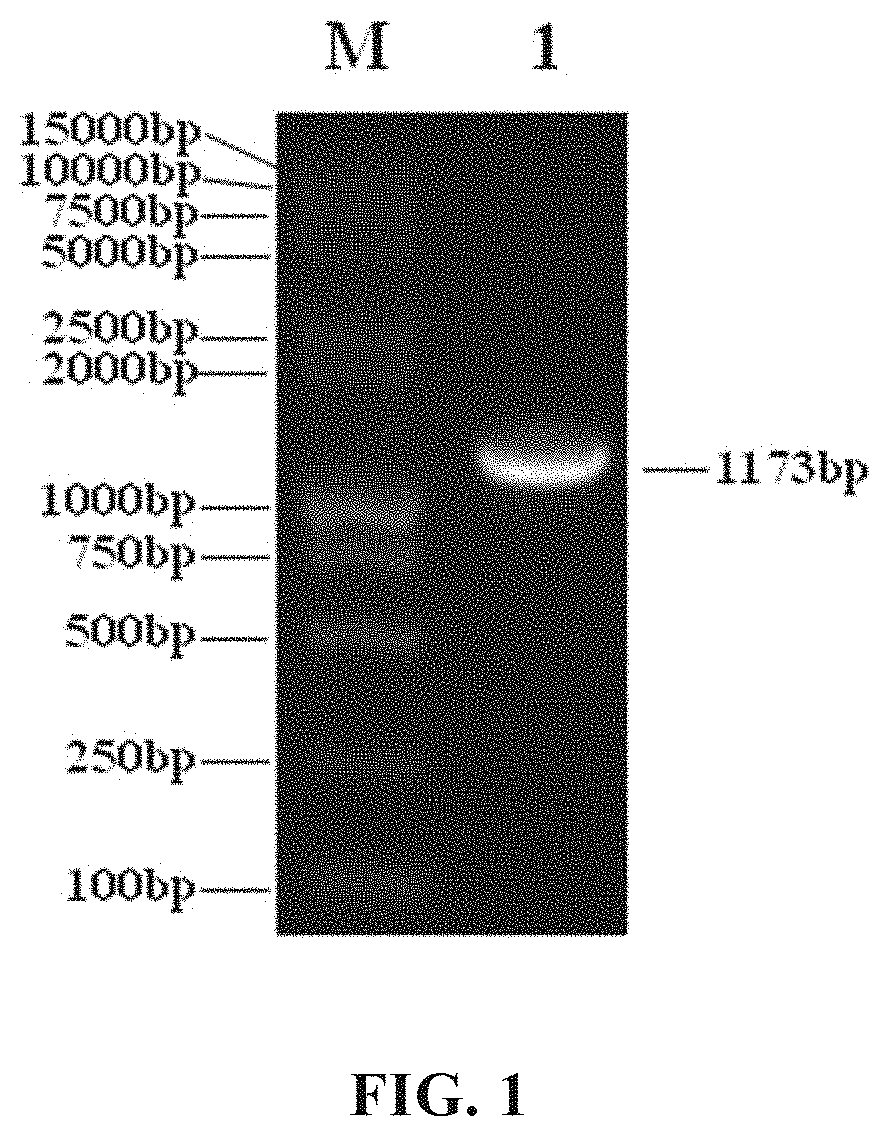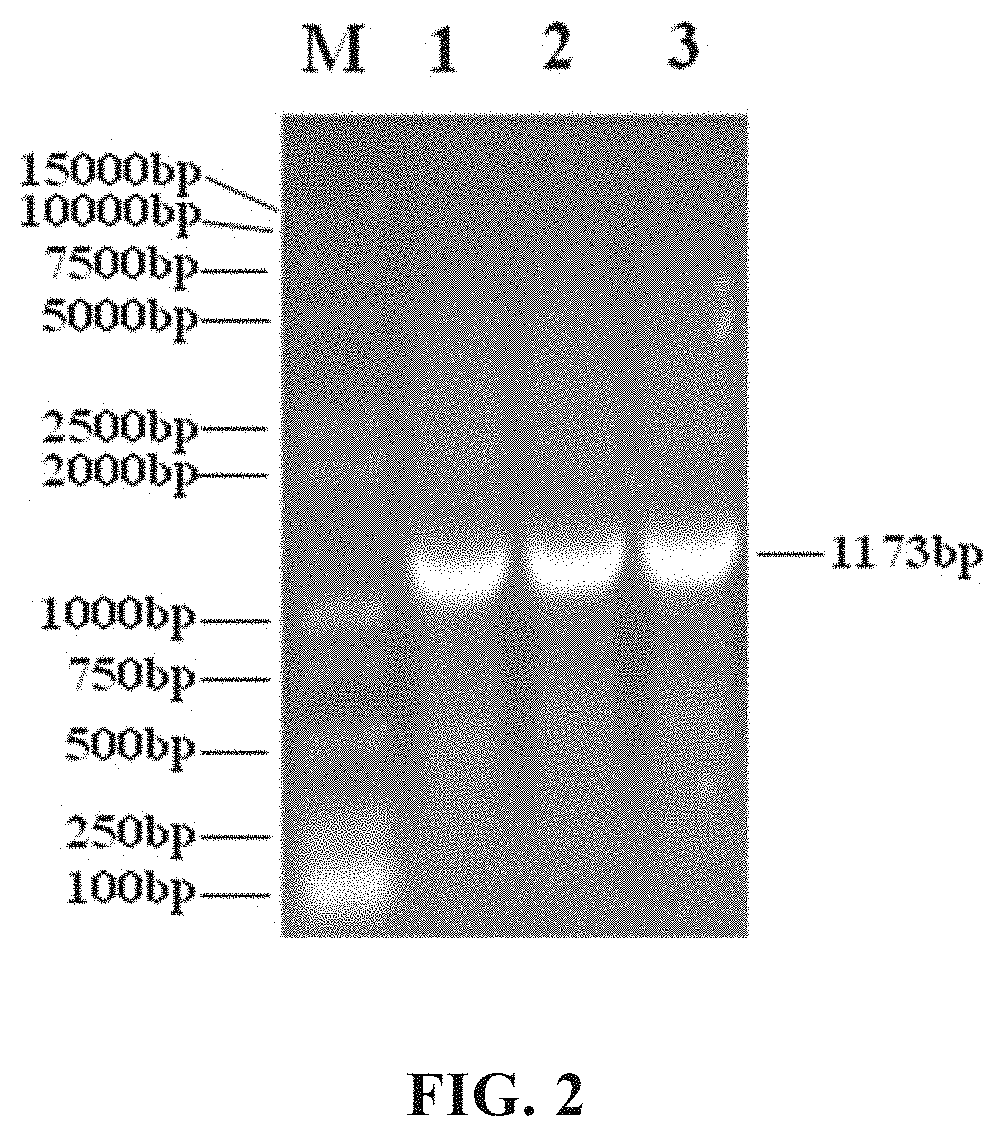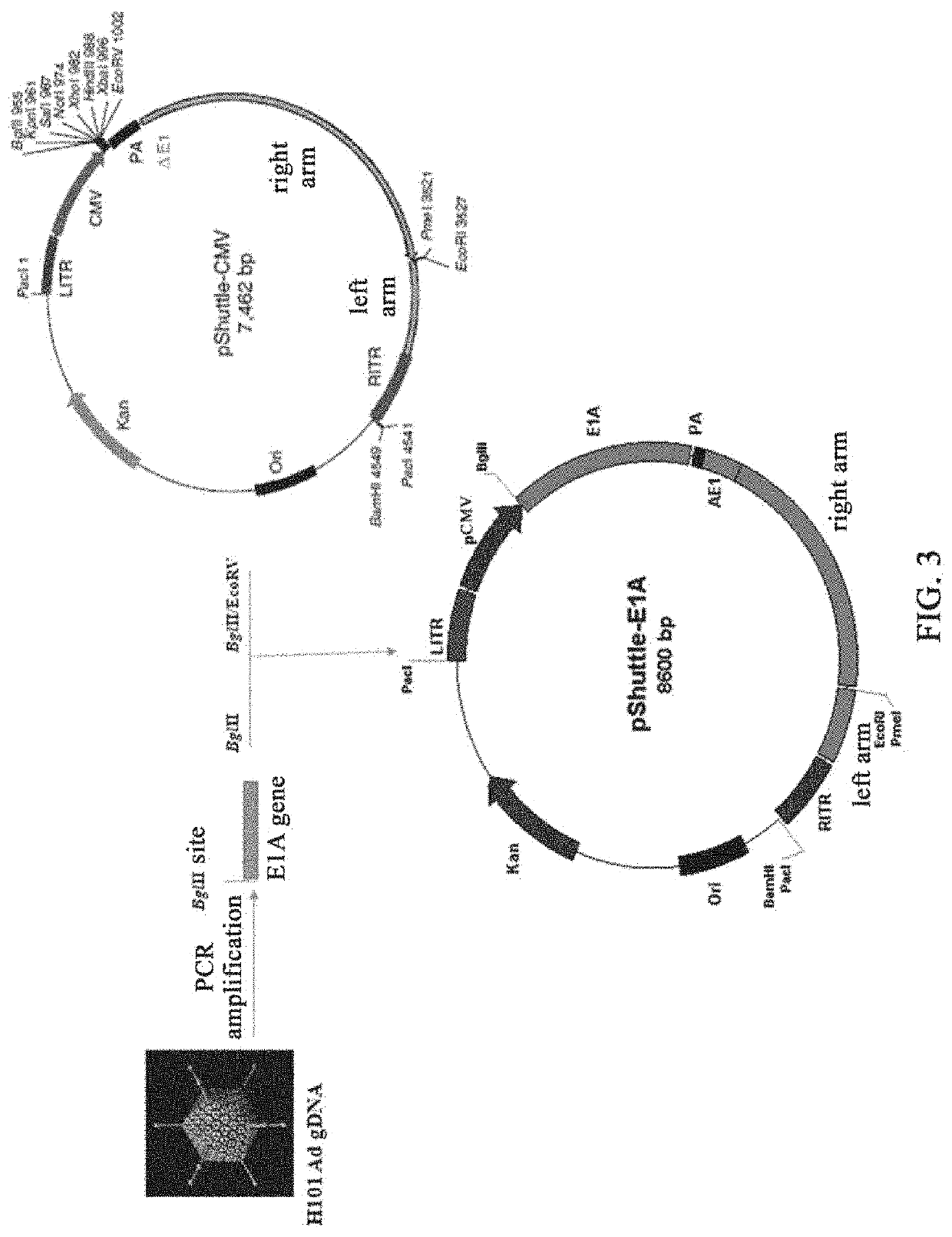Isolated Recombinant Oncolytic Adenoviruses, Pharmaceutical Compositions, and Uses Thereof for Drugs for Treatment of Tumors and/or Cancers
a technology of oncolytic adenovirus and pharmaceutical composition, which is applied in the field of biotechnology, can solve the problems of immunotherapy being tumor escape, difficult to maintain the effect, and still cannot solve the fundamental problem, and achieve superior tumor killing effect, inhibiting pdl1 expression, and reducing the replication capacity of normal cells
- Summary
- Abstract
- Description
- Claims
- Application Information
AI Technical Summary
Benefits of technology
Problems solved by technology
Method used
Image
Examples
preparation example 1
[0190]Two PCR primers (P1:GGAGGACTGAAAATGAG (SEQ ID No. 1), and P2:TGAGGTCAGATGTAACCAAGATTA (SEQ ID No. 2); Note: The 5′ end of primer P1 is added with a BglII restriction site, which is underlined) were designed based on the human adenovirus type 5 (AD5) genomic DNA sequence (ACCESSION: AC_000008) in Genbank of NCBI (i.e, the National Center for Biotechnology Information, https: / / www.ncbi.nlm.nih.gov)); the genomic DNA of the oncolytic virus (H101) produced by Shanghai Sunway Biotech Co., Ltd. was extracted and used as a template, and a 1164 bp sequence between 551-1714 on AD5 genomic DNA was amplified by high-fidelity PCR from the template. The actual size is 1173 bp (see FIG. 1). This sequence includes the coding region of the E1A gene (excluding the E1A promoter sequence) and part of the 3′UTR region. The obtained PCR product was digested with BglII and was cloned into the multiple cloning site region (MCS) between BglII and the EcoRV site on the vector pShu...
preparation example 2
[0193]Three shRNA sequences (shPDL1-1 (also referred to as shPDL1-#1), shPDL1-2 (also referred to as shPDL1-#2), and shPDL1-3 (also referred to as shPDL1-#3), which are SEQ ID NO. 16, SEQ ID NO. 19, and SEQ ID NO. 22, respectively) targeting, respectively, three regions of 168-190, 430-452 and 589-611 of the mRNA of the coding region of PDL1 were designed based on the human PDL1 variant1 sequence (ACCESSION: NM_014143) in the Genbank on the NCBI website. In addition, a negative control sequence shPDL1-NC which is unrelated to the human PDL1 mRNA was designed. The sequences are as follows:
(1) shPDL1-1synthetic sense sequence(SEQ ID NO. 14):synthetic antisense sequence(SEQ ID NO. 15):CCC-3′shRNA DNA (SEQ ID NO. 16):(2) shPDL1-2synthetic sense sequence(SEQ ID NO. 17):synthetic antisense sequence(SEQ ID NO. 18):GATCC-3′shRNA DNA(SEQ ID NO. 19):(3) shPDL1-3synthetic sense sequence(SEQ ID NO. 20):Synthetic antisense sequence(SEQ ID NO. 21):CTC-3′shRNA DNA(SEQ ID NO. 22):(...
preparation example 3
c DNA of Oncolytic Adenovirus (OAd-shPDL1)
[0198]1. After the inhibitory effect of shPDL1 was confirmed, a coding frame including U6 promoter and the whole sequence of shPDL1 were cloned into pShuttle-MCS-E1A vector. The pSGU6 / GFP / Neo-shPDL1 vector was digested with SacI and the cohesive end formed thereby was digested with T4 DNA polymerase to obtain blunt end. Then, precipitation and recovery were performed using ethanol / ammonium acetate. The coding frame sequence including U6 promoter and shPDL1 sequence was recovered after digestion with KpnI; simultaneously pShuttle-MCS-E1A vector was digested by KpnI and EcoRV and recovered. Finally, three shPDL1 coding frames were linked to the pShuttle-MCS-E1A vector, respectively, to obtain the final vector pShuttle-U6-shPDL1-CMV-E1A, as shown in FIG. 10. Several colonies were selected for plasmid extraction and identified by KpnI / HindIII digestion. Correct clone will produce a band of 370 bp (see FIG. 11). The correct pShuttle-U6-shPDL1-CMV...
PUM
| Property | Measurement | Unit |
|---|---|---|
| time | aaaaa | aaaaa |
| time | aaaaa | aaaaa |
| time | aaaaa | aaaaa |
Abstract
Description
Claims
Application Information
 Login to View More
Login to View More - R&D
- Intellectual Property
- Life Sciences
- Materials
- Tech Scout
- Unparalleled Data Quality
- Higher Quality Content
- 60% Fewer Hallucinations
Browse by: Latest US Patents, China's latest patents, Technical Efficacy Thesaurus, Application Domain, Technology Topic, Popular Technical Reports.
© 2025 PatSnap. All rights reserved.Legal|Privacy policy|Modern Slavery Act Transparency Statement|Sitemap|About US| Contact US: help@patsnap.com



